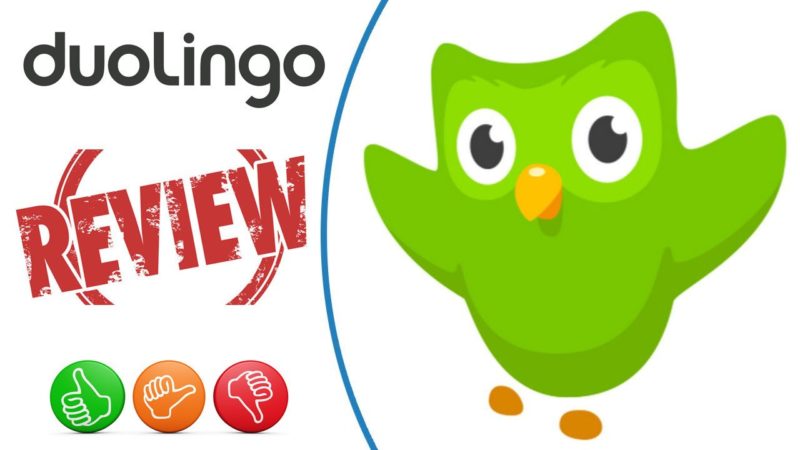There are a lot of language learning apps available, but it can be difficult to find one that gives you the lessons and detail you need to really become fluent. It’s even more difficult to find one that is free and does all that. That’s where Duolingo comes into play, but it’s important to review how useful it really is.
Duolingo for English Speakers
Currently, there are completed English courses for 18 languages:
- Spanish
- French
- German
- Italian
- Portuguese
- Dutch
- Russian
- Swedish
- Irish
- Turkish
- Danish
- Norwegian
- Polish
- Esperanto
- Ukrainian
- Hebrew
- Welsh
- Vietnamese
Two more languages are currently available in beta testing:
- Hungarian
- Greek
Finally, there are seven languages that are being worked on (hatching stage):
- Romanian
- Czech
- Swahili
- Hindi
- Korean
- Indonesian
- Klingon (yes, for you Star Trek fans)

Getting Started with Duolingo
The app is broken down into easy to digest modules. Each module focuses on a particular element of that language, such as basic phrases, food, animals, and pronouns. The program has already decided in which order you should learn each element of the language. You cannot skip ahead of what’s available, but you can see what is coming up once you finish with your available lessons.
If you already have a basic understanding of a language, you can place out of these modules too. This is done through the button to the right called test out. Feel free to brush up on the language by running through the lessons, or dive right into the test. The choice is yours.
Lesson Components in Duolingo
Learning a language requires you to think in different ways (at least if you want to become fluent). To ensure you get the right mix, Duolingo has a range of activities to keep your brain working and focused.
The following are the primary types of lessons you will encounter.
- Translation in which you will see and hear a word or phrase in the language you are learning and you will provide the English translation (or vice versa).
- Matching exercises are great for helping you remember exactly what one word means when your mind has crammed too much information.
- Grammar is an essential part of learning a language. Speech bubbles explain why the language works in a way that you may not expect.
- Listening exercises will help you develop the ear you need to understand what is being said. There is also a speaking component to help you learn to properly articulate, although you can turn this off if you would rather not talk while on a train or out in public.

Language Learning Motivation Through Games
The Duolingo interface is very clear and visually pleasing. It’s bright, colorful, and uses cartoon characters to keep you engaged. They know that motivation is the key to language learning success. So they made sure you’re hooked from the start with gamification.
Duolingo makes language learning into a game. However, its focus on fun doesn’t equal good language learning methods. The app keeps you entertained through collecting XPs and a fictional currency called lingot.
You can check out bonus skills using lingots, which you earn for completing sections. Choose from several different options so that you can have something a little out of the ordinary. Buy one of these with your lingots to keep trying new things with what you have learned. They even include entertaining options, such as idioms and flirting phrases all the way to the bottom.
Reaching XPs can be easily confused with reaching language learning goals. By creating a fake system of gratification, Duolingo tricks its users into thinking they’ve learned a language. When in fact, all they’ve done is fall for the illusion.

Translation as a Language Learning Method
Duolingo focuses very heavily on translation. The idea is to increase your vocabulary using sentences. Although practicing high-frequency phrases is very important when you’re learning a language, translation can derail your learning progress.
Sometimes you will encounter something that is just strange. One of the ones that caused me to pause early on was a phrase that translated to “The bear drinks beer.” Yes, the whole phrase contained words I had learned, but the image really threw me off because, well, you imagine a bear drinking beer. It is quite a distracting image.
However, it is also to be expected. When you don’t have much of a vocabulary, Duolingo has to review what you do know. This could cause some pretty strange sentences. Additionally, sometimes the words and the lesson aren’t exactly related. Some of the words are not the kinds of words you think you are going to use. How often do you expect to be talking about mice in French? By the time it happens, you will have forgotten what you learned because, well, it’s not exactly relevant.
If you do not spell something correctly (or are more than one letter off) or if you do not pronounce something properly, it will be counted wrong. There is a little wiggle room for one typo, but more than that and it assumes you are wrong.
Duolingo Is a Start. Kinda…
Duolingo’s main goal is to get you interested in the language. By making you feel like you progress, they make you think language learning is the most fun activity in the world (and we 100% agree). Duolingo does a great service for raising enthusiasm for language learning. But they have make a lot of improvements to become an effective language learning platform.
A feature they often receive criticism for is their penalization for minor mistakes. If you do not spell something correctly (or are more than one letter off) or if you do not pronounce something properly, it will be counted wrong. There is a little wiggle room for one typo, but more than that and it assumes you are wrong.
Perhaps the biggest area for growth in the app is in socializing. Many apps have a way to talk to others in the language to review what you’ve learned – Duolingo doesn’t have that feature. Since speaking is the reason why you learn a language, forgetting to include that is not a good sign. Any app that gets you to speak out loud has achieved its goal in progressing you towards fluency. Without speaking, you can’t expect to reach language learning goals effectively.
Presenting a Trustworthy Language Learning App
If you want to successfully learn a language, you need a program that can promise you results. OptiLingo is built on the combination of the most effective language learning theories today. We use proven methods to create a strategy that can take you to fluency faster than you ever thought possible.
OptiLingo’s Guided Immersion uses high-frequency phrases and presents them in a stress-free environment. You can learn at your own pace, and fit your lessons into your daily routine comfortably. Although we don’t have fictional currencies and cartoon characters to keep you entertained, our app is designed to give you the most relevant information efficiently.







